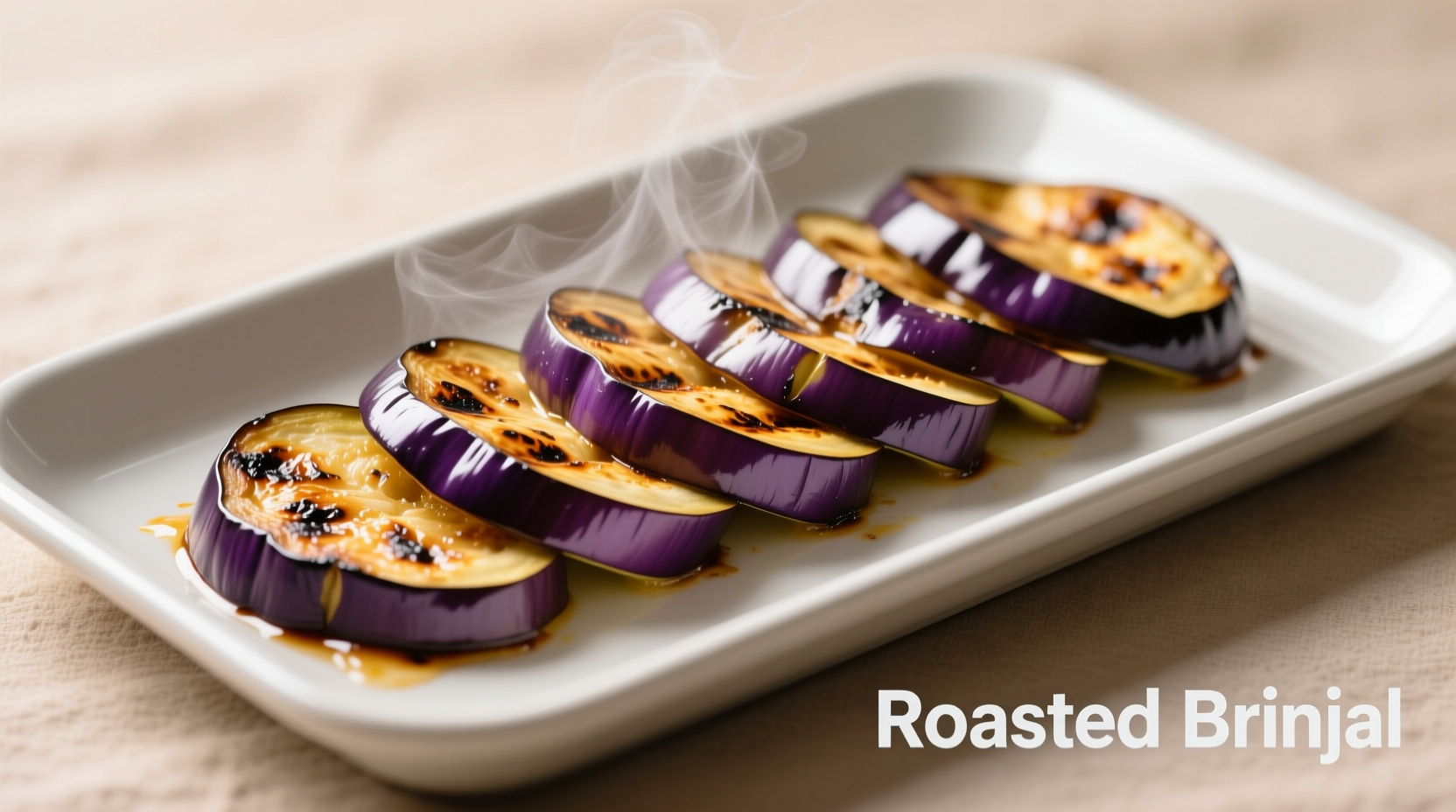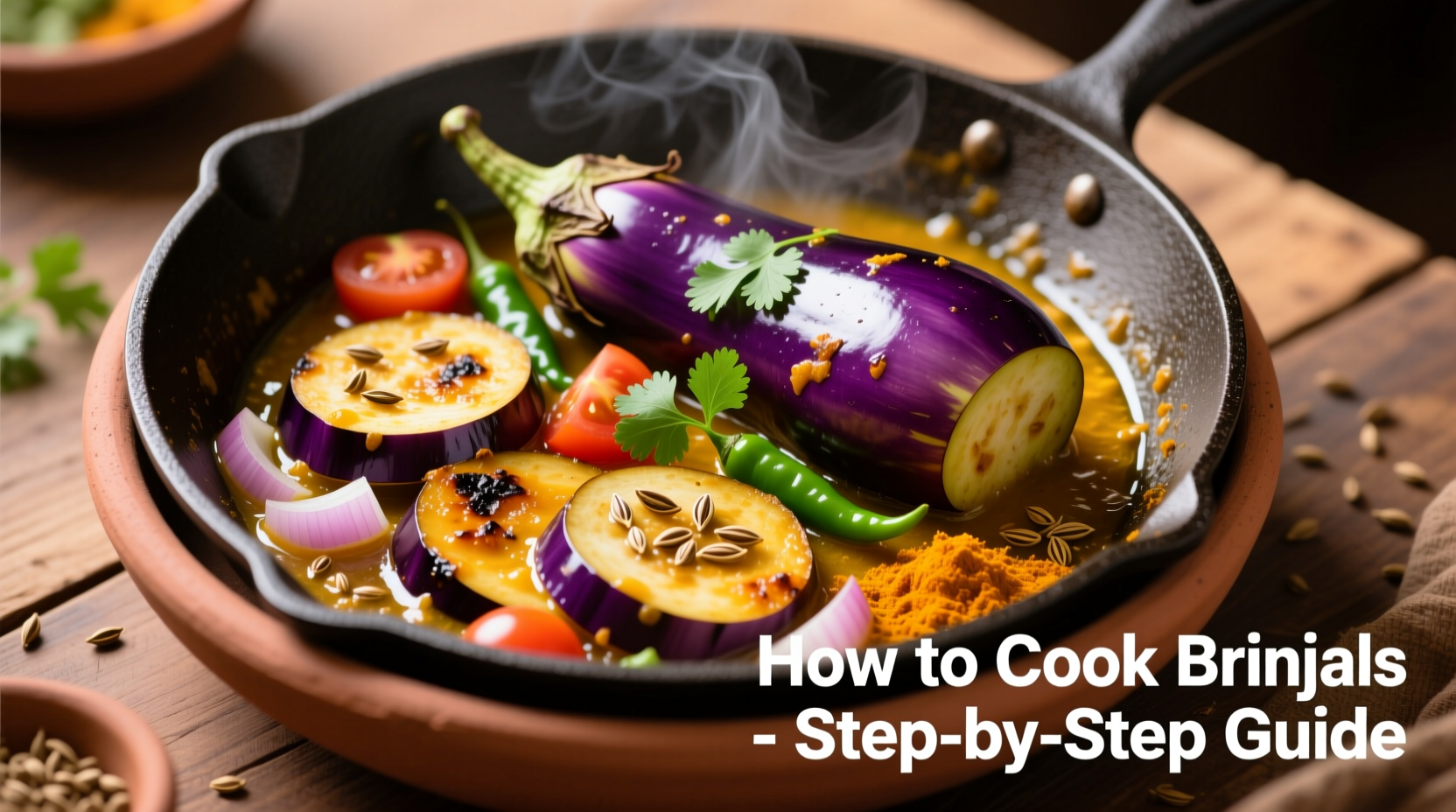Mastering brinjal preparation transforms this often-misunderstood vegetable from potentially bitter and soggy to tender, flavorful perfection. Whether you're making Indian baingan bharta, Mediterranean ratatouille, or simple grilled slices, these professional techniques ensure restaurant-quality results every time.
Why Brinjal Cooking Requires Special Techniques
Brinjals (Solanum melongena) have a unique cellular structure with high water content and air pockets that can lead to oil absorption and sogginess if not handled properly. According to USDA agricultural research, the spongy texture comes from their low density (0.5-0.7 g/cm³) compared to other vegetables. This structural characteristic requires specific preparation methods to achieve optimal cooking results.
| Brinjal Variety | Best Cooking Method | Preparation Time | Texture Result |
|---|---|---|---|
| Globe/Easter Egg | Roasting, Grilling | 30-45 minutes | Creamy, tender |
| Japanese/Chinese | Stir-frying, Steaming | 15-20 minutes | Firm, delicate |
| Indian (Baingan) | Currying, Stuffing | 25-35 minutes | Rich, absorbent |
Step-by-Step Brinjal Preparation Guide
1. Selecting and Preparing Your Brinjal
Choose firm, heavy-for-their-size brinjals with smooth, glossy skin. Avoid those with wrinkles, soft spots, or discoloration. The University of California Cooperative Extension confirms that fresher brinjals contain less bitterness due to lower levels of solanine compounds.
Preparation sequence:
- Wash thoroughly under cold water
- Trim ends but keep skin intact (contains valuable nutrients)
- Cut into uniform 1/2-inch slices or cubes
- Salt generously (1 teaspoon per medium brinjal) and rest in colander for 30 minutes
- Rinse and pat completely dry with paper towels
This salting process draws out excess moisture through osmosis, reducing oil absorption by up to 30% according to culinary research from America's Test Kitchen. For those avoiding added sodium, try microwaving slices for 5 minutes as an alternative technique.
2. Mastering Cooking Methods
Roasting Technique
Preheat oven to 400°F (200°C). Toss prepared brinjal with 1 tablespoon olive oil per medium vegetable. Spread in single layer on parchment-lined baking sheet. Roast for 25-30 minutes, flipping halfway, until golden brown and tender. This dry-heat method concentrates flavor while preventing sogginess.
Grilling Method
Brush grill grates with oil and preheat to medium-high. Arrange brinjal slices on grill, cooking 4-5 minutes per side until char marks appear and flesh is tender. The direct heat creates delicious caramelization while allowing excess moisture to escape.
Stir-Frying Success
Heat 2 tablespoons oil in wok until shimmering. Add brinjal in single layer and cook undisturbed for 3 minutes. Stir-fry 5-7 minutes total until tender-crisp. The key is maintaining high heat and avoiding overcrowding the pan.

Avoiding Common Brinjal Cooking Mistakes
Professional chefs consistently identify three critical errors that ruin brinjal dishes:
- Skipping the salting step - leads to oil-saturated, soggy results
- Using low cooking temperatures - causes brinjal to absorb oil rather than sear
- Overcrowding the cooking surface - creates steam that prevents proper browning
Food science research from USDA National Agricultural Library shows that brinjals cooked at temperatures below 375°F (190°C) absorb 40% more oil than those cooked at proper high heat. This explains why many home cooks struggle with greasy eggplant dishes.
Flavor Pairing Recommendations
Brinjals act as flavor sponges, making thoughtful pairing essential. Traditional combinations include:
- Mediterranean: Garlic, tomatoes, oregano, and olive oil
- Indian: Mustard oil, cumin, turmeric, and asafoetida
- East Asian: Soy sauce, ginger, rice vinegar, and sesame oil
- Middle Eastern: Tahini, lemon, cumin, and parsley
For optimal flavor development, add acidic components like tomatoes or lemon juice after cooking, as adding them too early can prevent proper browning.
Storage and Leftover Tips
Cooked brinjal maintains quality for 3-4 days in airtight containers in the refrigerator. For longer storage, freeze roasted or grilled slices in single layers before transferring to freezer bags. When reheating, use dry heat methods like oven or air fryer rather than microwave to preserve texture.
Leftover cooked brinjal shines in these creative applications:
- Blended into pasta sauces for added richness
- Chopped into frittatas or omelets
- Mixed with breadcrumbs for vegetarian patties
- Layered in lasagna as a zucchini substitute











 浙公网安备
33010002000092号
浙公网安备
33010002000092号 浙B2-20120091-4
浙B2-20120091-4